 In an interesting reversal of new media trends, online leisure retailer lastminute.com is to launch its first print magazine.
In an interesting reversal of new media trends, online leisure retailer lastminute.com is to launch its first print magazine.
The new “lifestyle” title, set to launch in mid-July, will be sent to the retailer’s top 100,000 customers and will include travel mag-style guides and more informal features on holidaymaking and leisure pursuits.
The move reflects the company’s strategy to reposition itself as a “lifestyle brand” rather than just a run-of-the-mill online travel retailer.
The 72-page quarterly title will be headed up by former-Guardian Guide and Hotdog editor Ben Olins, who is tasked with editing the magazine and leading an editorial and design team at publishing company Zone, appointed to oversee the process.
Inhaling deeply on a heady perfume of Eau de Buzzword, James Freedman, chief executive at Zone rhapsodised, “Lastminute.com has developed a fantastic business inspiring and fulfilling the dreams and aspirations of a growing group of dynamic, confident and adventurous consumers.
“Creating a magazine that reflects the choices and interests of this group of ‘action-leaders’ will reinforce and highlight Lastminute.com’s position as a lifestyle icon.”
 Not to be outdone, Brent Hoberman, chief executive of Lastminute.com, brewed up his own beefy brand of buzzword blather: “The launch of this magazine is a fantastic opportunity to engage with our most loyal customers and reinforce our brand values through inspirational and informative editorial.
Not to be outdone, Brent Hoberman, chief executive of Lastminute.com, brewed up his own beefy brand of buzzword blather: “The launch of this magazine is a fantastic opportunity to engage with our most loyal customers and reinforce our brand values through inspirational and informative editorial.
Our ‘raison d’être’ is to improve people’s leisure time and this lifestyle magazine which generates ideas on how to do just that is the ideal way to give something extra to our customers.”
Lastminute.com’s in-house sales team will be handling the magazine’s advertising, marking their first foray into off-line advertising.
With the magazine offering readers “a mix of pure temptation and stimulation to try out new experiences”, it’s clearly hoped that the publication will stimulate online sales for the company.
Today’s announcement follows news of the company’s £577m takeover by Sabre Holdings, the owner of Travelocity.
 After a long cuddle on the sofa, Napster and Ericsson have announced a global partnership to offer a fully integrated new digital music service aimed at mobile phone customers around the world.
After a long cuddle on the sofa, Napster and Ericsson have announced a global partnership to offer a fully integrated new digital music service aimed at mobile phone customers around the world.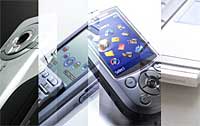 The two companies hope that their service will allow mobile operators to get their grubby mitts on the “growth opportunities for personalised digital entertainment on the mobile phone and PC” and will, no doubt, include the usual slew of lucrative, downloadable offerings like ringtones, master tones, images, wallpaper and video content.
The two companies hope that their service will allow mobile operators to get their grubby mitts on the “growth opportunities for personalised digital entertainment on the mobile phone and PC” and will, no doubt, include the usual slew of lucrative, downloadable offerings like ringtones, master tones, images, wallpaper and video content. More and more mobile operators are already cutting themselves a slice of the mobile digital music services pie, with the largest Korean mobile phone operator recently purchasing a controlling stake in the country’s biggest record label.
More and more mobile operators are already cutting themselves a slice of the mobile digital music services pie, with the largest Korean mobile phone operator recently purchasing a controlling stake in the country’s biggest record label. Yahoo has whipped out its wallet and snapped up DialPad Communications, a company making VoIP software allowing users to make cut-price calls over the Internet.
Yahoo has whipped out its wallet and snapped up DialPad Communications, a company making VoIP software allowing users to make cut-price calls over the Internet. The company offers a selection of VoIP subscription plans to users – including prepaid VoIP calling cards – with charges ranging from as little as 1.7 cents per minute for calls to more than 200 countries.
The company offers a selection of VoIP subscription plans to users – including prepaid VoIP calling cards – with charges ranging from as little as 1.7 cents per minute for calls to more than 200 countries. In its announcement, Dialpad served up a bit more information about the deal: “Yahoo plans on leveraging Dialpad’s PSTN calling capabilities to add to Yahoo Messenger’s recently enhanced PC-to-PC voice calling offering. These products are very complementary and by combining our strengths, we are better positioned to take advantage of the fast growing IP telephony market and build a range of exciting new services.”
In its announcement, Dialpad served up a bit more information about the deal: “Yahoo plans on leveraging Dialpad’s PSTN calling capabilities to add to Yahoo Messenger’s recently enhanced PC-to-PC voice calling offering. These products are very complementary and by combining our strengths, we are better positioned to take advantage of the fast growing IP telephony market and build a range of exciting new services.” BT has unveiled a smarty-pants phone designed to integrate landline and mobile phone technologies.
BT has unveiled a smarty-pants phone designed to integrate landline and mobile phone technologies. BT Fusion is part of the company’s strategy to lure back customers wooed by mobile telephonic temptresses touting cheap calls.
BT Fusion is part of the company’s strategy to lure back customers wooed by mobile telephonic temptresses touting cheap calls. “The future will be convergence”, insisted Livingstone. “This is going to be a market that grows fantastically over time even though it might take a while to get going. We still expect many millions of converged handsets by the end of the decade.”
“The future will be convergence”, insisted Livingstone. “This is going to be a market that grows fantastically over time even though it might take a while to get going. We still expect many millions of converged handsets by the end of the decade.” Calls to landlines originating in the home will be ratcheted up at BT’s regular rate of 5.5 p (10 cents, €0.08) for up to an hour.
Calls to landlines originating in the home will be ratcheted up at BT’s regular rate of 5.5 p (10 cents, €0.08) for up to an hour.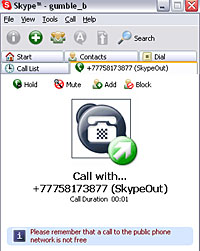 After several weeks in beta, Skype has officially launched the Skype Voicemail service, the company’s second pre-paid premium offering.
After several weeks in beta, Skype has officially launched the Skype Voicemail service, the company’s second pre-paid premium offering.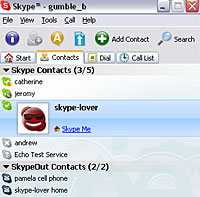 Skype v1.3 allows bolts on the ability to populate Skype contact lists from desktop applications including MSN, and auto-populate exact matches from Microsoft Outlook.
Skype v1.3 allows bolts on the ability to populate Skype contact lists from desktop applications including MSN, and auto-populate exact matches from Microsoft Outlook. T-Mobile USA today revealed that nearly half a million are currently signed up to access their hotspots with hourly, daily, monthly or yearly accounts
T-Mobile USA today revealed that nearly half a million are currently signed up to access their hotspots with hourly, daily, monthly or yearly accounts Although many early Wi-Fi adopters were laptop-toting business suits connecting in airports, hotel rooms and lobbies, the demographic is now far broader, with students, music fans, backpackers, silver surfers and others hitting the hotspots with their PDAs, smartphones and laptops.
Although many early Wi-Fi adopters were laptop-toting business suits connecting in airports, hotel rooms and lobbies, the demographic is now far broader, with students, music fans, backpackers, silver surfers and others hitting the hotspots with their PDAs, smartphones and laptops.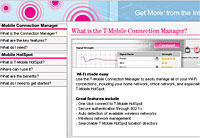 New locations include the provision of roaming access throughout another 39 more airports in North America (making a total of 75 airports covered), with Wi-Fi guest room access being installed at 525 more hotels in the Marriott, Hilton, Ritz-Carlton, Doubletree and Renaissance chains.
New locations include the provision of roaming access throughout another 39 more airports in North America (making a total of 75 airports covered), with Wi-Fi guest room access being installed at 525 more hotels in the Marriott, Hilton, Ritz-Carlton, Doubletree and Renaissance chains. Smarting daily from the soaring popularity of its upstart rival Firefox, Microsoft is hoping to stem the exodus by bolting on new security features to their next version of Internet Explorer browser.
Smarting daily from the soaring popularity of its upstart rival Firefox, Microsoft is hoping to stem the exodus by bolting on new security features to their next version of Internet Explorer browser.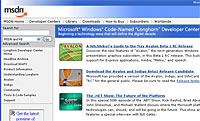 With Internet Explorer losing friends fast because of its unsavoury reputation as a honeypot for homepage hijackers and skulking spyware, these new security features can’t come too soon for Microsoft.
With Internet Explorer losing friends fast because of its unsavoury reputation as a honeypot for homepage hijackers and skulking spyware, these new security features can’t come too soon for Microsoft.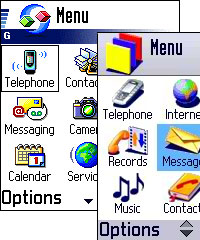 Finnish mobile phone giants Nokia have launched a new Web browser for their Series 60 smartphones.
Finnish mobile phone giants Nokia have launched a new Web browser for their Series 60 smartphones.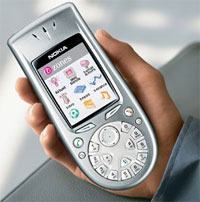 “Nokia is excited to enrich Series 60 with optimised mobile Web browsing. Open source software is an ideal basis for development since it enables Nokia to leverage and contribute to speedy software innovation and development. As a result, the entire Series 60 value chain, from manufacturers and operators to end-users, will benefit from the flexible architecture, full Web compliance and a truly enjoyable user experience,” enthused Pertti Korhonen, Chief Technology Officer, Nokia.
“Nokia is excited to enrich Series 60 with optimised mobile Web browsing. Open source software is an ideal basis for development since it enables Nokia to leverage and contribute to speedy software innovation and development. As a result, the entire Series 60 value chain, from manufacturers and operators to end-users, will benefit from the flexible architecture, full Web compliance and a truly enjoyable user experience,” enthused Pertti Korhonen, Chief Technology Officer, Nokia. Philip Schiller, Apple’s senior vice president of Worldwide Product Marketing reckons the new browser is the dog’s nadgers: “The Safari Web Kit’s blazing performance, efficient code base and support for open standards make it an ideal open source technology for projects like Nokia’s new Series 60 browser.”
Philip Schiller, Apple’s senior vice president of Worldwide Product Marketing reckons the new browser is the dog’s nadgers: “The Safari Web Kit’s blazing performance, efficient code base and support for open standards make it an ideal open source technology for projects like Nokia’s new Series 60 browser.”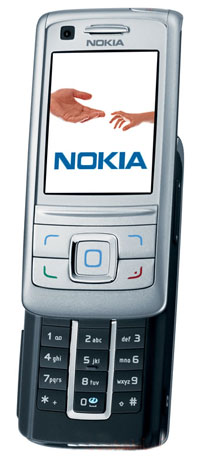 In a veritable orgy of mobile manufacturing, Nokia has launched a grand total of seven new handsets, including a dual camera 3G device and their most feature-rich CDMA phone yet.
In a veritable orgy of mobile manufacturing, Nokia has launched a grand total of seven new handsets, including a dual camera 3G device and their most feature-rich CDMA phone yet.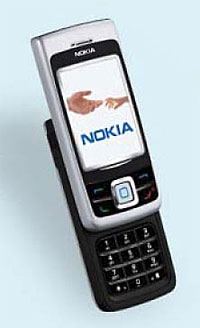 The 3G multimedia-tastic 6280 is a compact WCDMA/EDGE sliding handset sporting a 320 x 240 pixel screen, a 2 megapixel camera (with a VGA front camera for video calls), a removable mini-SD card and a built-in FM radio. It’s expected to appear on the shelves in the fourth quarter 2005 for EUR375.
The 3G multimedia-tastic 6280 is a compact WCDMA/EDGE sliding handset sporting a 320 x 240 pixel screen, a 2 megapixel camera (with a VGA front camera for video calls), a removable mini-SD card and a built-in FM radio. It’s expected to appear on the shelves in the fourth quarter 2005 for EUR375.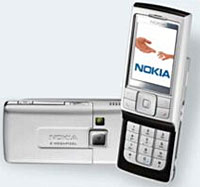 “The growth prospects on the CDMA front are extremely encouraging. The CDMA market is expected to grow at pace with the overall handset market and the global CDMA handset volume is expected to increase by 10 to 15 percent year-on-year in 2005,” he said.
“The growth prospects on the CDMA front are extremely encouraging. The CDMA market is expected to grow at pace with the overall handset market and the global CDMA handset volume is expected to increase by 10 to 15 percent year-on-year in 2005,” he said.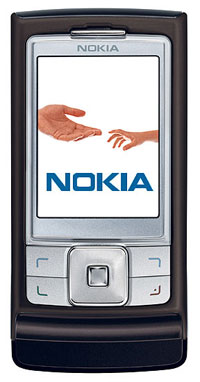 The last of the slider phones is the 6111, which has more than a passing resemblance to the hugely successful i-mate JAM phone, although the screen is much smaller at 128×160 pixels. The camera contains a 1-megapixel camera and 6x digital zoom and retails for around EUR270.
The last of the slider phones is the 6111, which has more than a passing resemblance to the hugely successful i-mate JAM phone, although the screen is much smaller at 128×160 pixels. The camera contains a 1-megapixel camera and 6x digital zoom and retails for around EUR270.